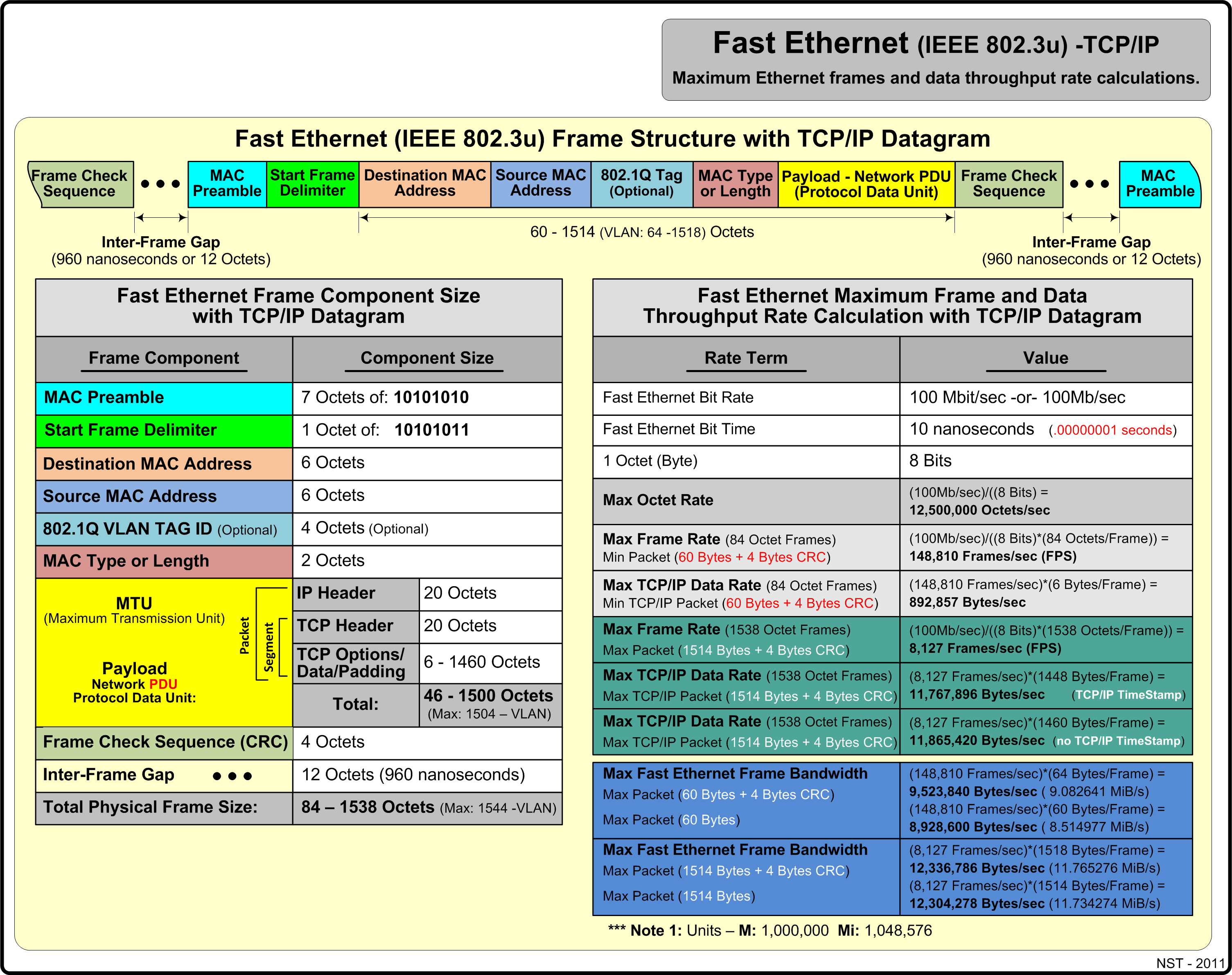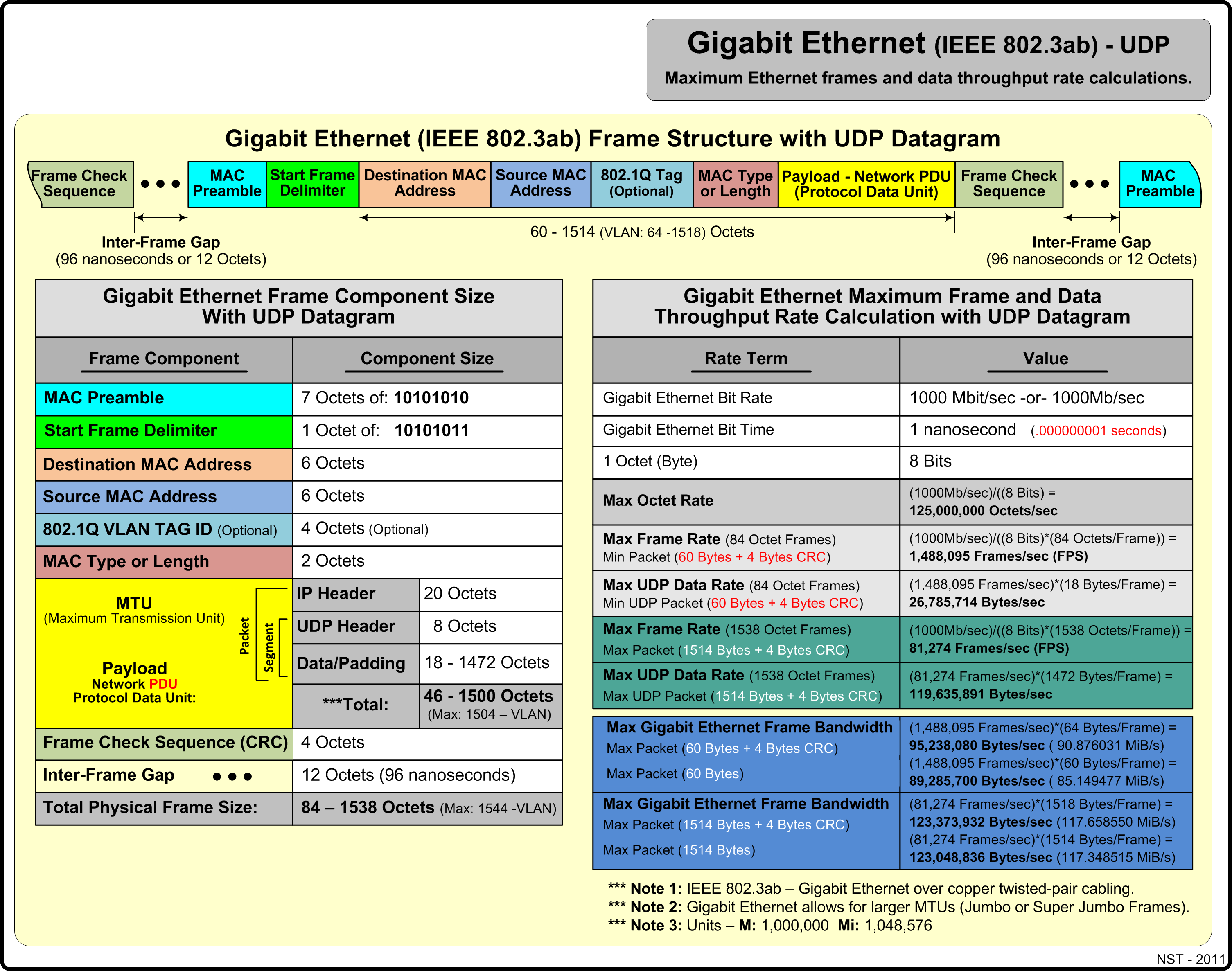Difference between revisions of "LAN Ethernet Maximum Rates, Generation, Capturing & Monitoring"
From NST Wiki
Jump to navigationJump to search (→Overview) |
(→Ethernet Maximum Rates) |
||
| Line 5: | Line 5: | ||
== Ethernet Maximum Rates == | == Ethernet Maximum Rates == | ||
=== Fast Ethernet Using TCP/IP === | === Fast Ethernet Using TCP/IP === | ||
| + | |||
| + | [[Image:Fast_ethernet_tcpip.png|center|frame|Fast Ethernet (IEEE 802.3u) with TCP/IP maximum rate values.]] | ||
=== Fast Ethernet Using UDP === | === Fast Ethernet Using UDP === | ||
| + | |||
| + | [[Image:Fast_ethernet_udp.png|center|frame|Fast Ethernet (IEEE 802.3u) with UDP maximum rate values.]] | ||
=== Gigabit Ethernet Using TCP/IP === | === Gigabit Ethernet Using TCP/IP === | ||
| + | |||
| + | [[Image:Gigabit_ethernet_tcpip.png|center|frame|Gigabit Ethernet (IEEE 802.3ab) with TCP/IP maximum rate values.]] | ||
=== Gigabit Ethernet Using UDP === | === Gigabit Ethernet Using UDP === | ||
| + | |||
| + | [[Image:Gigabit_ethernet_udp.png|center|frame|Gigabit Ethernet (IEEE 802.3ab) with UDP maximum rate values.]] | ||
Revision as of 09:37, 17 September 2011
Contents
Overview
This article covers maximum LAN Ethernet rates values that can be achieved for both Fast Ethernet and Gigabit Ethernet using the TCP/IP or the UDP network protocols. The steps on how to generate, capture and monitor maximum Ethernet rates will be shown using various tools bundled with the Network Security Toolkit (NST). Finally, a demonstration on how Linux segmentation off-loading for supported NIC adapters can produce Super Ethernet Frames that are captured and reported by the network protocol analyzer will be presented.



